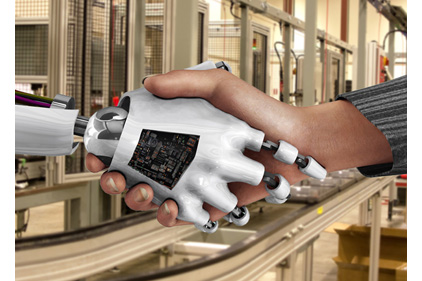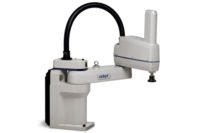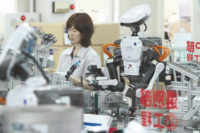CAMBRIDGE, MA—Engineers at the Massachusetts Institute of Technology (MIT) are attempting to make robots smart enough to work effectively with people. They believe the key may be cross training.
“People aren’t robots; they don’t do things the same way every single time,” says Julie Shah, an assistant professor of aeronautics and astronautics at MIT and head of the Interactive Robotics Group in the Computer Science and Artificial Intelligence Laboratory (CSAIL). “And so, there is a mismatch between the way we program robots to perform tasks in exactly the same way each time and what we need them to do if they are going to work in concert with people.”
Shah and her colleagues have been studying whether techniques that have been shown to work well in training people can also be applied to mixed teams of humans and robots. One such technique, known as cross-training, sees team members swap roles with each other on given days.
“This allows people to form a better idea of how their role affects their partner and how their partner’s role affects them,” says Shah.
To allow robots to take part in the cross-training experiments, the MIT engineers first had to design a new algorithm to allow the devices to learn from their role-swapping experiences. So they modified existing reinforcement-learning algorithms to allow the robots to take in not only information from positive and negative rewards, but also information gained through demonstration. In this way, by watching their human counterparts switch roles to carry out their work, the robots were able to learn how the humans wanted them to perform the same task.
Each human-robot team then carried out a simulated task in a virtual environment, with half of the teams using the conventional interactive reward approach, and half using the cross-training technique of switching roles halfway through the session. Once the teams had completed this virtual training session, they were asked to carry out the task in the real world, but this time sticking to their own designated roles.
Shah and her colleagues discovered that that the period in which human and robot were working at the same time — known as concurrent motion — increased by 71 percent in teams that had taken part in cross-training, compared to the interactive reward teams. They also found that the amount of time the humans spent doing nothing — while waiting for the robot to complete a stage of the task, for example — decreased by 41 percent.
When responding to a questionnaire after the experiment, human participants in cross-training were far more likely to say the robot had carried out the task according to their preferences than those in the reward-only group, and reported greater levels of trust in their robotic teammate.
Shah believes this improvement in team performance could be due to the greater involvement of both parties in the cross-training process. “When the person trains the robot through reward it is one-way: The person says ‘good robot’ or the person says ‘bad robot,’ and it’s a very one-way passage of information,” she explains. “But, when you switch roles the person is better able to adapt to the robot’s capabilities and learn what it is likely to do, and so we think that it is adaptation on the person’s side that results in a better team performance.”







